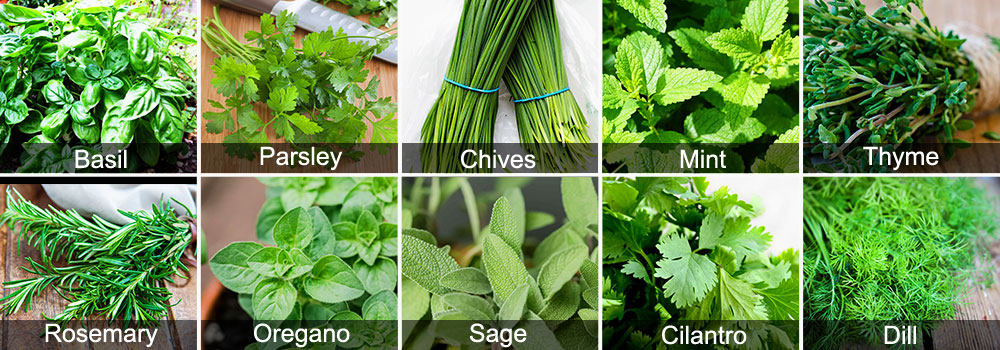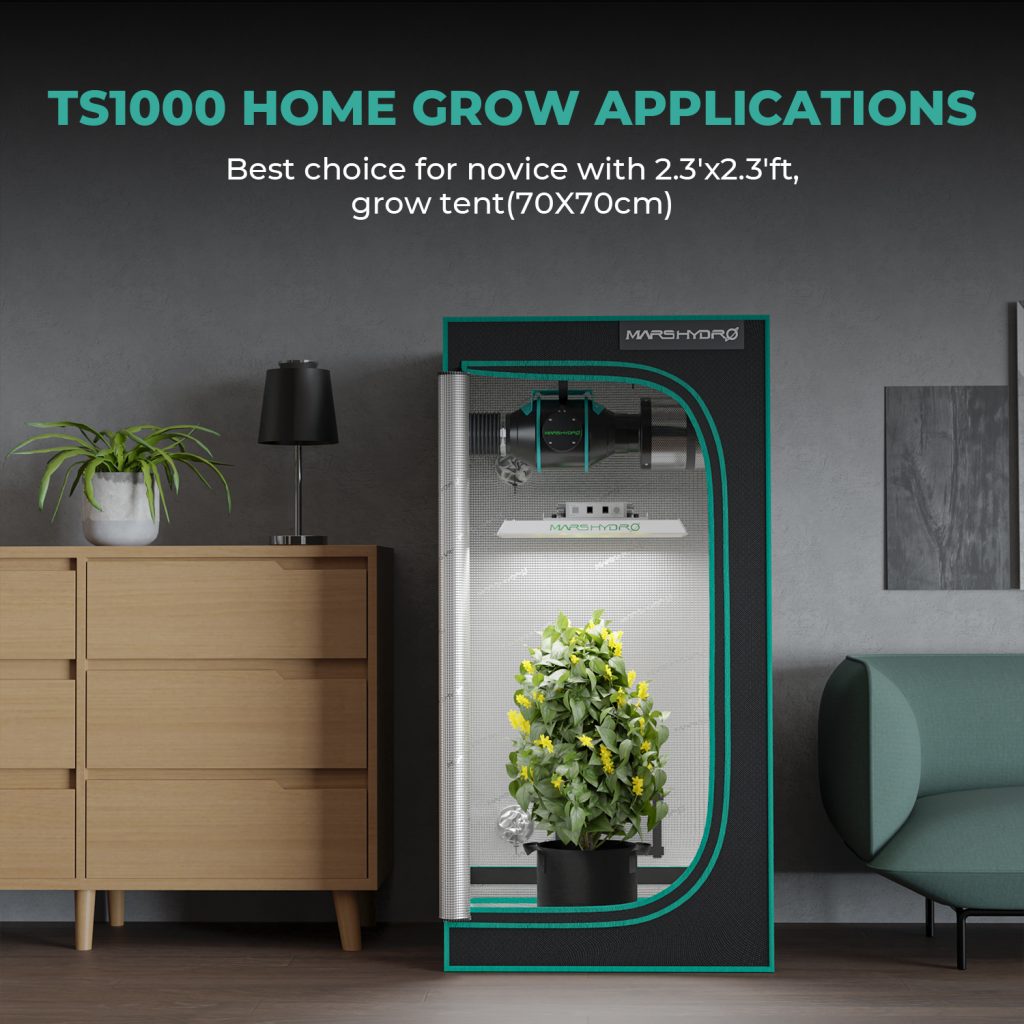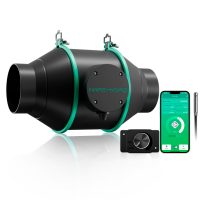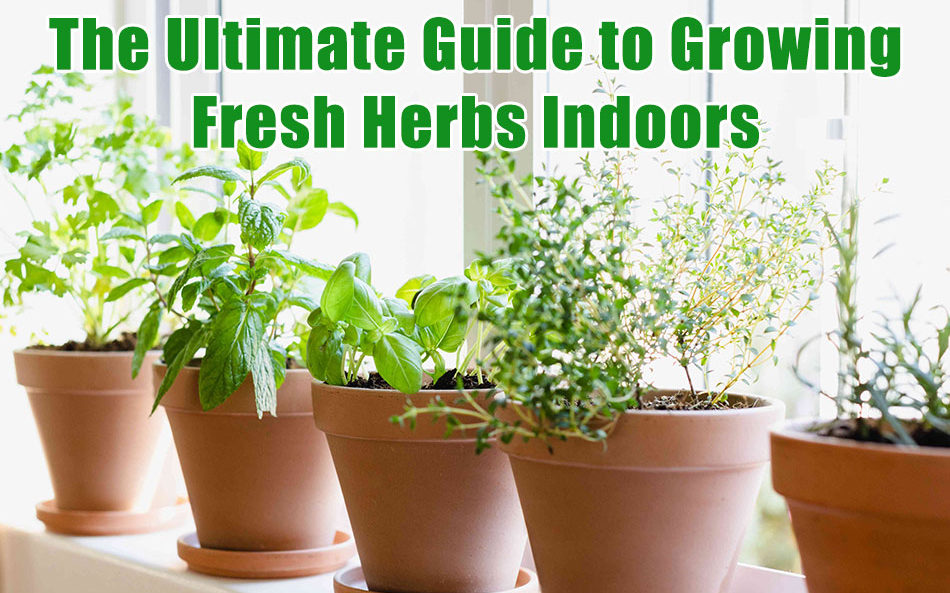Indoor herb gardening is a rewarding and practical way to bring the freshness and flavors of herbs right into your home, regardless of the season or available outdoor space. Whether you’re a cooking enthusiast looking to enhance your culinary creations or simply want to add a touch of greenery to your living space, growing herbs indoors offers numerous benefits. It allows you to have a readily available supply of aromatic and flavorful herbs at your fingertips while enjoying the therapeutic benefits of nurturing and tending to your own mini garden.
In this guide, we will explore the essential steps and techniques for successfully growing herbs indoors. Whether you have a spacious kitchen, a sunny windowsill, or a small apartment balcony, you’ll learn how to maximize the potential of your indoor space and cultivate a thriving herb garden.
The Benefits of Growing Herbs Indoors
Fresh Herbs at Hand: Having herbs indoors means you can access fresh herbs whenever you need them. No need to run to the grocery store every time you want to add some flavor to your dishes.
Improved Air Quality: Plants, including herbs, help improve indoor air quality by absorbing carbon dioxide and releasing oxygen. They also can help reduce levels of certain indoor air pollutants, making the air cleaner and fresher.
Aromatherapy: Many herbs have pleasant and aromatic scents. The smell of certain herbs can have a positive impact on your mood, reducing stress, and promoting relaxation.
Year-Round Harvesting: With indoor gardening, you can grow herbs year-round, regardless of the season or weather conditions outside.
Sustainable and Cost-Effective: Growing your own herbs indoors can save money in the long run. You won’t need to buy fresh herbs as often, and you can reduce your carbon footprint by decreasing the transportation and packaging associated with store-bought herbs.
Encourages Green Living: Indoor herb gardening promotes sustainability and green living, encouraging people to connect with nature and grow their own food.
The Best Herbs to Grow Indoors

Basil: With its vibrant leaves and distinct aroma, basil is a popular herb for indoor gardening. It thrives in warm, sunny locations and can be used in a variety of dishes, including pasta, salads, and pesto.
Parsley: Known for its fresh flavor and versatility, parsley is an excellent herb to grow indoors. It prefers moderate sunlight and regular watering. Harvest the outer leaves to encourage continual growth.
Chives: Chives are easy to grow indoors and can add a mild onion flavor to dishes. They prefer bright, indirect light and well-draining soil. Snip the leaves as needed, and they will continue to grow back.
Mint: Mint is a vigorous herb that grows well indoors. Its refreshing fragrance and taste make it perfect for teas, cocktails, and desserts. Mint requires moist soil and moderate sunlight.
Thyme: Thyme is a versatile herb that adds a savory touch to various dishes. It prefers bright light and well-draining soil. Allow the soil to dry slightly between waterings to prevent overwatering.
Rosemary: With its woody stems and aromatic needles, rosemary is a popular herb for indoor gardening. It thrives in bright light and drier soil conditions. Harvest sprigs as needed, but avoid excessive pruning.
Oregano: Oregano is a hardy herb that can be grown indoors. It requires a sunny location and well-drained soil. Pinch back the stems to promote bushier growth and harvest the leaves for seasoning.
Sage: Sage is a flavorful herb that can thrive indoors. It prefers full sun and well-draining soil. Harvest the leaves before flowering for the best flavor.
Cilantro: Cilantro, also known as coriander, is a popular herb used in various cuisines. It requires moderate sunlight and well-drained soil. Harvest the leaves and stems before the plant bolts.
Dill: Dill is an aromatic herb that can be grown indoors. It prefers moderate to bright light and well-draining soil. Harvest the leaves and seeds for culinary use.
How to Grow Herbs Indoors from Seeds(6 Techniques You Should Know)

1. Creating the Ideal Growing Environment
To grow herbs indoors from seeds, it’s important to create an ideal growing environment that promotes germination and healthy growth. At first, you need to select some suitable containers with drainage holes to prevent waterlogging. Seed trays or small pots work well for starting seeds indoors. And please ensure they are clean and sterilized before use to avoid the risk of disease.
Secondly, you could use a high-quality potting mix or seed-starting mix that is well-draining and lightweight. Avoid using garden soil, as it may contain pests, diseases, or be too heavy for young seedlings.
2. Planting and Propagating Herbs
Planting Seeds:
When you prepare to sow the seed, please follow the seed packet instructions for the recommended planting depth and spacing for each herb. Typically, herb seeds are sown at a shallow depth and lightly covered with soil. Gently press the soil to ensure good seed-to-soil contact.
Propagating Herbs:
a. Stem Cuttings: Many herbs, such as basil, mint, and rosemary, can be propagated from stem cuttings. Take a 4-6 inch (10-15 cm) cutting from a healthy, mature plant just below a leaf node. Remove the lower leaves, leaving a few at the top. Dip the cut end in a rooting hormone (optional) and plant it in a pot filled with moist potting soil. Keep the soil consistently moist and place the cutting in a location with bright, indirect light.
b. Division: Some herbs, like chives and thyme, can be propagated through division. Carefully remove the herb plant from its container or garden bed. Gently separate the clumps into smaller sections, ensuring each section has roots attached. Plant the divisions in separate containers or pots filled with fresh potting soil. Water thoroughly and place in a well-lit area.
3. Watering and Nutrient Management
Watering and nutrient management are crucial aspects of growing herbs indoors from seeds. Proper watering ensures that the herbs receive adequate moisture without becoming waterlogged, while nutrient management helps sustain healthy growth. Here are some important considerations:
Watering Techniques:
- Watering Frequency: Check the moisture level of the soil regularly by inserting your finger about an inch deep. So you can water the herbs when the top inch of soil feels dry. Besides, avoid overwatering, as it can lead to root rot and other issues.
- Gentle Watering: Use a watering can with a fine spout or a spray bottle to water the seedlings. This helps prevent excessive disturbance to the delicate plants and promotes even distribution of water.
- Drainage: Ensure that the containers have drainage holes to allow excess water to escape. Standing water can suffocate the roots and lead to root diseases. Empty the saucers or trays beneath the containers after watering to prevent water accumulation.
Watering Techniques for Established Plants:
- Adjusting Watering Frequency: As the herbs grow and their root systems develop, adjust the watering frequency accordingly. Generally, indoor herbs require watering when the top inch or so of the soil feels dry to the touch.
- Deep Watering: When watering, provide enough water so that it reaches the root zone. Water until you see water draining out of the drainage holes, ensuring that the entire root system is adequately hydrated.
- Avoiding Water Stagnation: Discard any excess water that collects in the saucers or trays after watering. This prevents the roots from sitting in stagnant water, which can lead to root rot and other problems.
Nutrient Management:
- Balanced Fertilizer: Use a balanced, water-soluble fertilizer formulated for herbs or vegetables. Follow the instructions on the fertilizer packaging for proper dilution and application rates.
- Frequency of Fertilization: Start fertilizing the herbs when they have developed a few sets of true leaves. Apply the fertilizer every two to four weeks, or as recommended by the fertilizer instructions.
- Avoid Over fertilization: Be cautious not to overfertilize, as excessive nutrients can harm the herbs. Follow the recommended dosage and dilution rates to prevent nutrient burn or nutrient imbalances.
- Organic Alternatives: If you prefer organic methods, consider using organic compost, compost tea, or organic fertilizer options specifically formulated for herbs. These can provide the necessary nutrients in a natural and sustainable manner.
4. Managing Light and Temperature
Managing light and temperature effectively is crucial for successfully growing herbs indoors from seeds. Providing the right amount of light and maintaining optimal temperatures ensures healthy growth and robust herb plants. Here are some guidelines to help you manage light and temperature for your indoor herb garden:
Identifying Lighting Needs:
Light Requirements: Most herbs require at least 6-8 hours of bright, indirect sunlight each day. Place your herb containers near a south-facing window or provide supplemental artificial lighting if natural light is limited.
Supplemental Lighting: If natural light is insufficient, consider using fluorescent or LED grow light. Position the grow lights a few inches above the plants and provide light for 12-16 hours a day. And adjust the height and duration based on the specific light requirements of each herb.
Providing Adequate Light:
Light Intensity: Ensure that the light reaching the plants is bright but not intense enough to cause heat stress or leaf burn. Monitor the distance between the light source and the plants to maintain optimal light intensity.
Light Schedule: Establish a consistent light schedule for your herbs. Aim for 12-16 hours of LED grow light per day, providing a period of darkness for the plants to rest. Use timers to automate the light schedule and maintain a consistent photoperiod.
Maintaining Optimal Temperature:erature Range: Most herbs thrive in temperatures between 60-75°F (15-24°C). Avoid exposing the plants to extreme temperature fluctuations, drafts, or excessively high temperatures, as these can stress the herbs.
Heat Sources: Keep the herb plants away from direct heat sources like radiators, heating vents, or appliances that emit heat. Excessive heat can cause dehydration and negatively impact plant health.
Cold Drafts: Protect the herbs from cold drafts, such as those near windows or doors. Sudden drops in temperature can harm the plants. Consider using insulation or moving the herbs to a more stable location during colder months.

Temperature Variation:
Day and Night Temperatures: Provide a slight drop in temperature during the night to mimic natural conditions. A 5-10°F (3-6°C) temperature drop is generally sufficient. This variation helps promote healthy growth and overall plant vigor.
Remember to regularly monitor the temperature and light levels in your indoor herb garden. Observe the plants for signs of stress or insufficient light, such as stretching or pale leaves. Adjust the lighting and temperature conditions accordingly to meet the specific needs of each herb. And by maintaining optimal light and temperature, you’ll foster robust growth and maximize the potential of your indoor herb garden.
5. Pruning, Harvesting, and Maintaining Herbs
Pruning, harvesting, and maintaining herbs are important aspects of growing herbs indoors from seeds. Proper pruning helps promote bushier growth, while timely harvesting ensures the herbs maintain their flavor and vitality. And regular maintenance tasks keep the plants healthy and thriving. Here are some guidelines for pruning, harvesting, and maintaining your indoor herb garden:
Pruning Techniques:
Promote Bushier Growth: Regularly prune your herbs to encourage bushier growth and prevent legginess. Pinch off the tips of the stems or remove a few leaves to stimulate branching. This encourages the herbs to develop a fuller and more compact shape.
Harvesting Herbs:
Timing: Harvest herbs when they have reached their peak flavor. This usually occurs before the plants start flowering. Regular harvesting encourages the herbs to continue producing fresh growth.
Selective Harvesting: When harvesting, selectively pick the outer leaves or stems rather than removing entire branches or plants. This allows the herbs to keep growing and replenishing.
Harvesting Methods: Use sharp, clean scissors or pruning shears to make clean cuts when harvesting herbs. Avoid tearing or damaging the plants while harvesting.
Preventing Pests and Diseases:
Monitor for Pests: Regularly inspect your indoor herb garden for any signs of pests such as aphids, whiteflies, or spider mites. If pests are detected, take appropriate measures such as using insecticidal soap or natural pest control methods.
Disease Prevention: Maintain good air circulation around the plants to prevent the development of fungal diseases. Avoid overwatering, and ensure proper drainage to prevent waterlogged soil.
Regular Maintenance:
Watering: Continue to water the herbs consistently, ensuring the soil is evenly moist but not waterlogged. Adjust the watering frequency based on the specific needs of each herb.
Nutrient Management: Fertilize the herbs regularly with a balanced, water-soluble fertilizer according to the recommended dosage and schedule. This provides the necessary nutrients for healthy growth.
Repotting: If the herbs outgrow their containers or become root-bound, consider repotting them into larger containers with fresh potting soil. This allows for better root development and nutrient uptake.
6. Troubleshooting Common Issues
While growing herbs indoors from seeds can be a rewarding experience, it’s not uncommon to encounter some common issues along the way. Identifying and addressing these issues promptly will help ensure the health and vitality of your indoor garden. Here are some common problems you may face and tips for troubleshooting them:
Yellowing Leaves: Yellowing leaves can be a sign of overwatering, nutrient deficiencies, or inadequate light. Ensure proper drainage to prevent waterlogging, adjust watering frequency, and check the soil moisture levels. Consider adjusting your fertilization routine to address nutrient deficiencies. Increase the amount or intensity of light exposure if the herbs aren’t receiving enough.
Wilting: Wilting can occur due to underwatering, overwatering, or root-related issues. Check the moisture level of the soil and adjust your watering practices accordingly. Ensure proper drainage to prevent waterlogging. If the herbs continue to wilt despite adequate watering, examine the root system for signs of root rot or other issues.
Pests: Common pests that can affect indoor herbs include aphids, whiteflies, and spider mites. You have to regularly inspect your herbs for any signs of pests, such as tiny insects, webbing, or distorted leaves. If pests are detected, isolate the affected plant and use appropriate measures, such as applying insecticidal soap or using natural pest control methods.
Diseases: Fungal diseases, such as powdery mildew or root rot, can occur in indoor herb gardens. Ensure proper air circulation around the plants, avoid overcrowding, and maintain appropriate humidity levels to minimize the risk of fungal diseases. Avoid overwatering, and use well-draining soil to prevent root rot. If necessary, treat fungal diseases with appropriate fungicides or natural remedies.
Leggy Growth: Leggy growth refers to tall, thin stems with sparse foliage. It is often caused by insufficient light or overcrowding. Ensure that your herbs receive adequate bright, indirect light for 6-8 hours a day. If natural light is limited, supplement it with artificial lighting positioned close to the plants.
Nutrient Deficiencies: Nutrient deficiencies can manifest as stunted growth, yellowing leaves, or poor overall health. Ensure that you are providing a balanced fertilizer suitable for herbs and following the recommended dosage and frequency. Adjust the fertilization routine based on the specific needs of your herbs and monitor the plants for signs of improved health.
Final Thoughts
Growing herbs indoors can be a fulfilling and rewarding endeavor, providing you with a convenient and fresh supply of aromatic flavors right in your own home. By following the steps and guidelines outlined in this guide, you can successfully cultivate a thriving indoor herb garden from seeds.
So, gather your seeds, prepare your containers, and let your green thumb flourish as you embark on the journey of growing herbs indoors. Start today and unlock a world of flavors, aromas, and possibilities right at your fingertips. Happy gardening!






